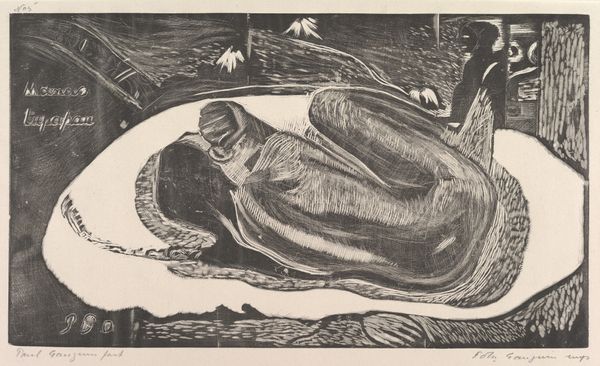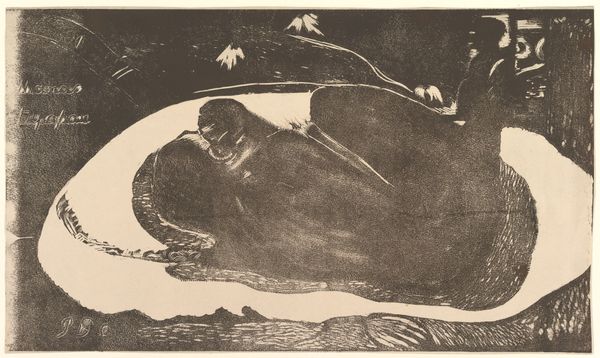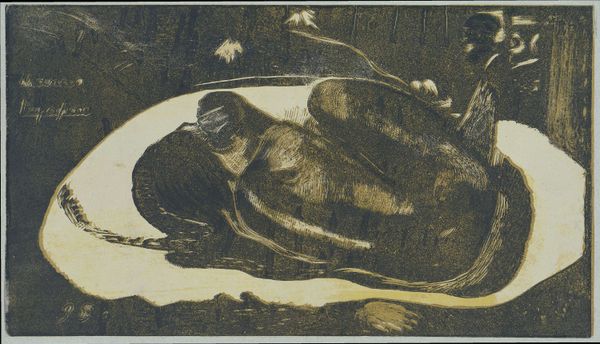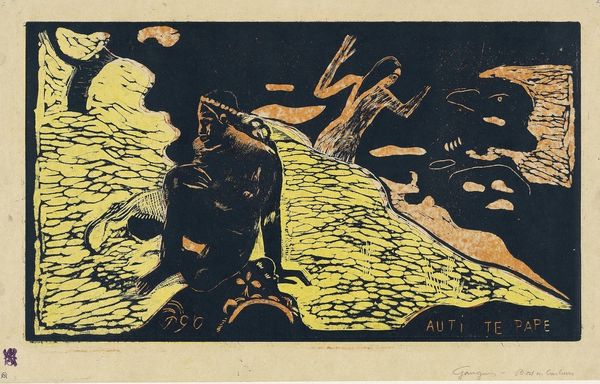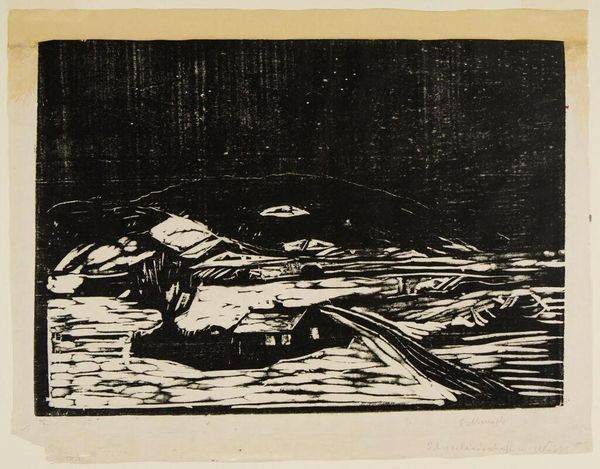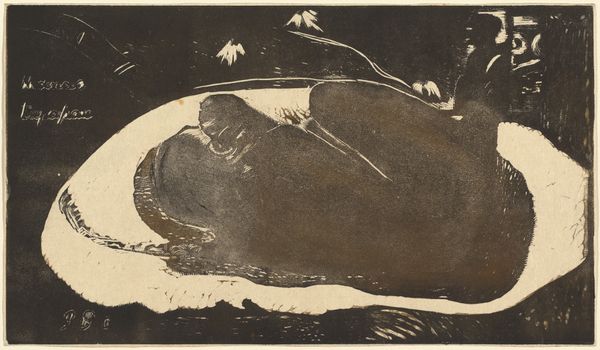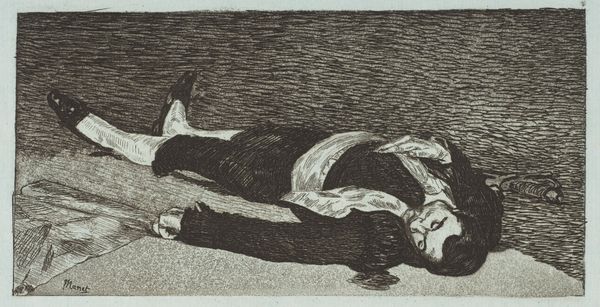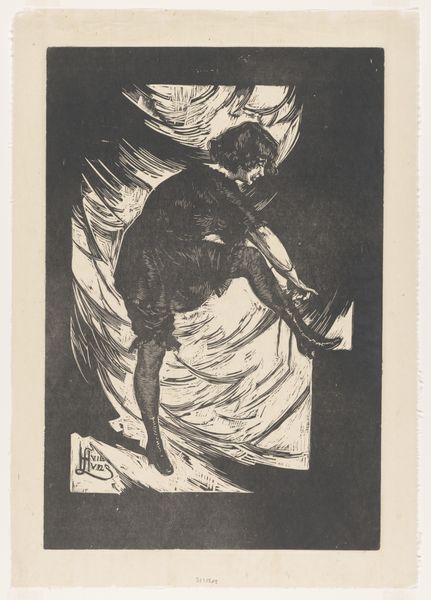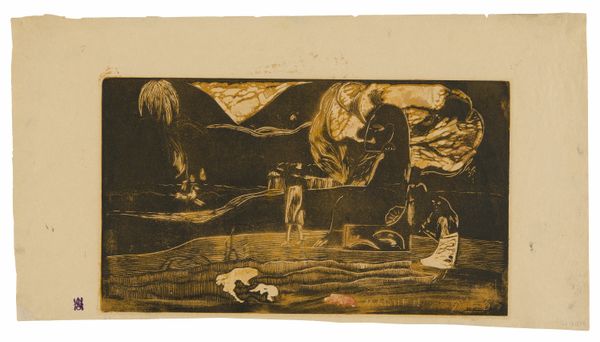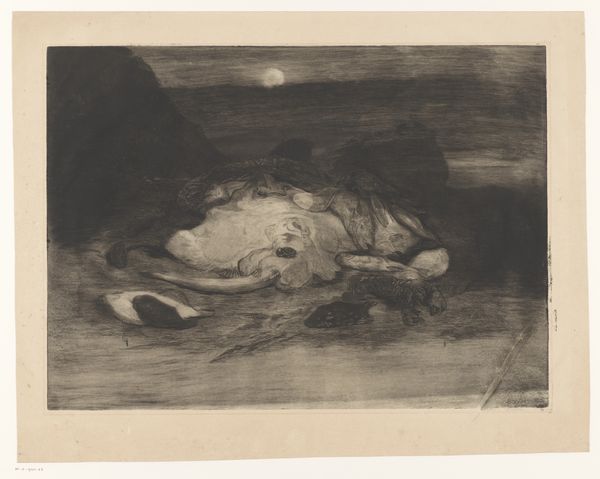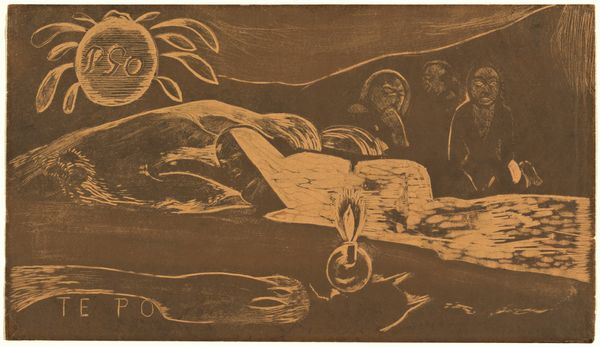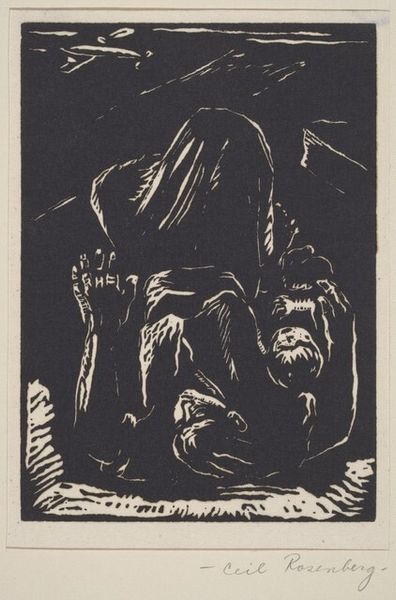
#
abstract painting
#
egg art
# print
#
possibly oil pastel
#
handmade artwork painting
#
oil painting
#
fluid art
#
acrylic on canvas
#
coffee painting
#
france
#
watercolour illustration
#
watercolor
Dimensions: 8 1/16 x 13 15/16 in. (20.48 x 35.4 cm) (image)19 5/8 × 23 3/4 × 1 1/8 in. (49.85 × 60.33 × 2.86 cm) (outer frame)9 13/16 × 15 11/16 in. (24.92 × 39.85 cm) (sheet)
Copyright: Public Domain
Curator: Initially, the stark contrasts strike me; there’s a real tension in how Gauguin deploys line and block in this woodcut. Editor: Right, and that palpable tension resonates so intensely. I am struck by its almost melancholic atmosphere— a heaviness underscored by the dense, dark swathes of the figure against that bright, almost unsettling yellow. Curator: Well, "Watched by the Spirits of the Dead," created by Paul Gauguin in 1894 and held at the Minneapolis Institute of Art, certainly isn't shying away from dramatic effect. We’re looking at a woodcut, a medium which already suggests a laborious and physically demanding production. Consider the act of carving away at the woodblock, a real physical interaction in contrast with the seeming passivity of the woman depicted. Editor: Absolutely. Gauguin's choice of this medium speaks to a broader context. He embraced so-called "primitive" artistic traditions. However, we have to consider the problematic elements, appropriating and exoticizing Tahitian culture within the legacy of colonialism and a deeply unequal power dynamic. He capitalizes on this perceived authenticity but often disregards the nuanced realities. The figure reclines as though she's being presented, made accessible and exposed. Curator: And the visual language contributes, don't you think? That heavy contouring creates a kind of haptic quality; we see and almost feel the density of her form. It makes me think about printmaking within an historical context and this bridging between craft and artmaking, in terms of art accessibility. Editor: Right, so beyond that immediate sensuality, there is a real sense of vulnerability exposed by those spirits watching in the darkness. Gauguin consistently portrayed Tahitian women, in a sense, staging them for the Western gaze and furthering a colonialist narrative that exoticized and eroticized the bodies of native women for his, primarily white, audience. Curator: It definitely feels like a moment captured in the process of revealing both its materials and its making. Editor: Agreed, but we need to remember its power operates within deeply embedded, troubling dynamics.
Comments
No comments
Be the first to comment and join the conversation on the ultimate creative platform.
